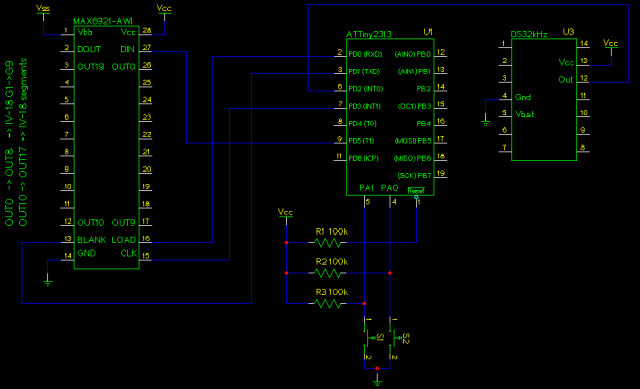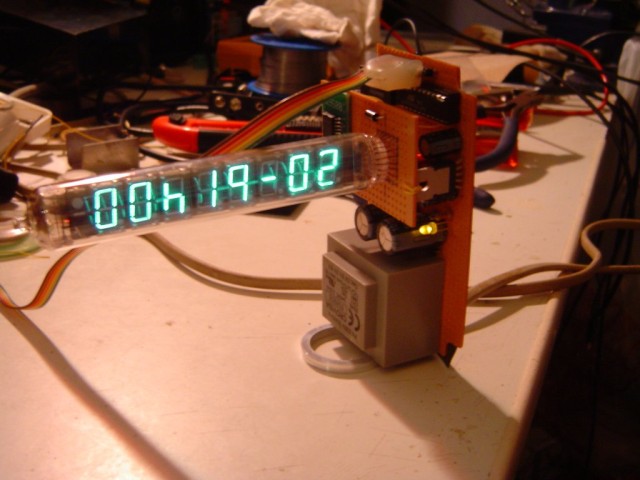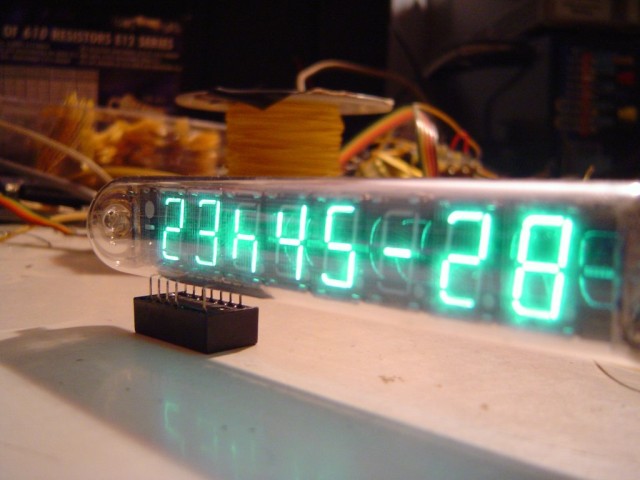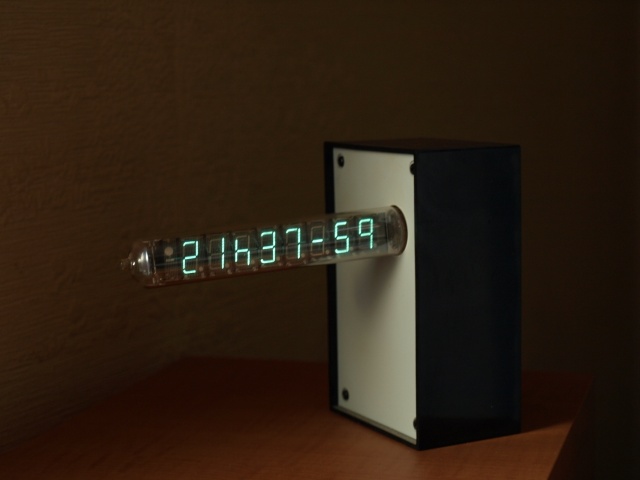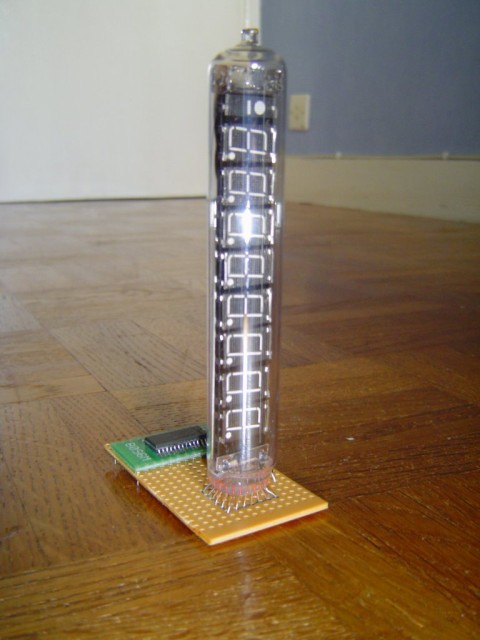In the previous article, I have study the way to power this large VFD, now we gonna take a look closer at the logic itself. We need to drive a lot of bits (8+9) at ~40v. After a little googling, I discover that Allegro still sell some VFD drivers, but they are really hard to buy, and only provide a small amout of outputs (in DIP package).
Ok .. so I decided to use a Maxim VFD driver: the MAX6921:
- 20 outputs
- 4 wire serial-interface
- supply voltage: 8v / 76v
- 40mA output
The main issue is that it only exist in a SO package, so I need to use a little adapter to use MAX6921 on a veroboard .. (I bought this at my local store, but they cost twice the price of the MAX)
The next step, is the clock itself. For my nixie clock, I tested several stuff like 50hz (mainlines) sync, or external oscillator but this isn’t accurate enought. This time, I decided to use a plain old DS32kHz crystal oscillator. I’m pretty sure this won’t loose a second in a week ;)
To finish the clock, I need a micro-controller, as I need a really little amout of IO (2 for buttons, 4 for the VFD driver, and 1 for the oscillator), I decided a ATtiny2313 could do the job perfectly and give me the enought room for other stuff (like a LDR for automatic dimming)
So, here the final schematic:
The full schematic
It’s the first time I used the ATtiny2313, but AVR-GCC is a great tools so.. To program this little stuff, I used the in-circuit programming, check out tuxgraphics doc for more infos about the whole stuff.
Hum, yeah ! ;)
Here the (quite) finished product
And if you look closer at the VFD:
And the finished product :
You will find a complete archive file here, it contains:
- All the sources need to program the ATtiny
- All the schematics to build you own ;)
/Enjoy

